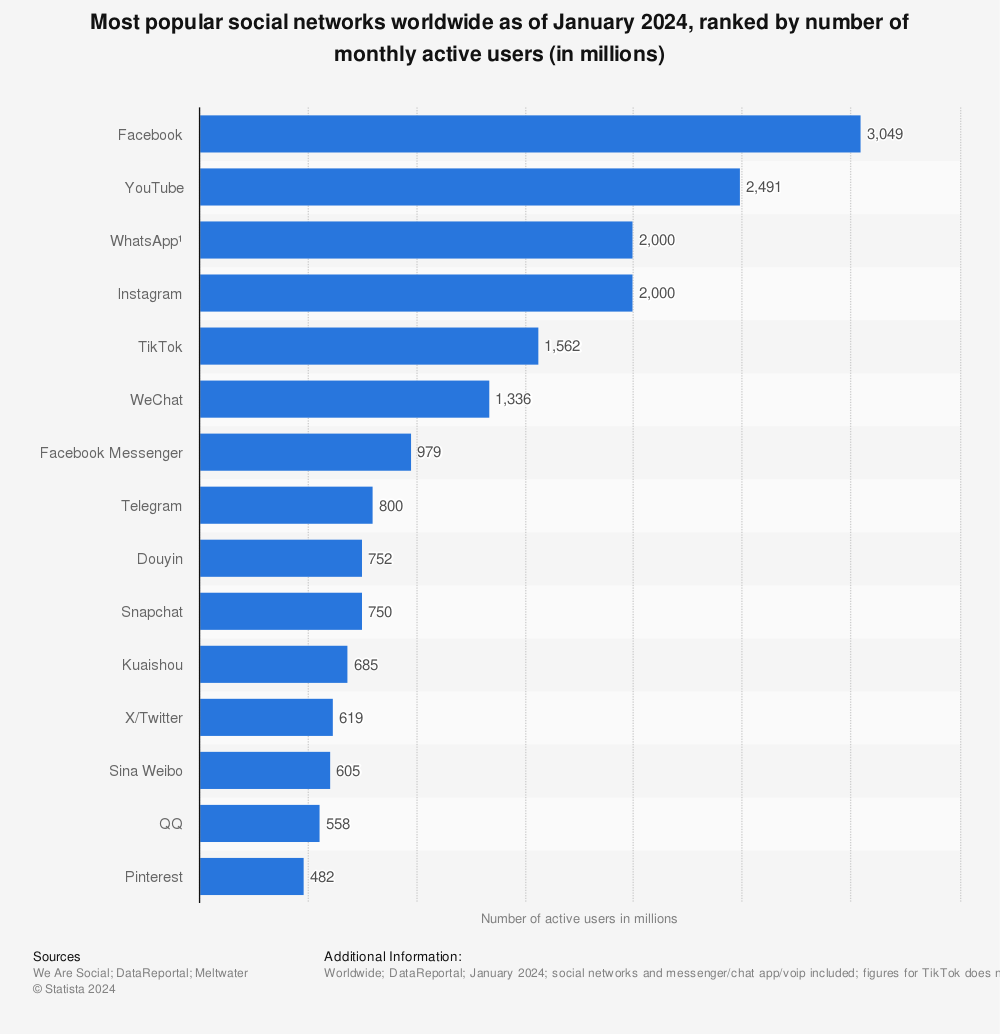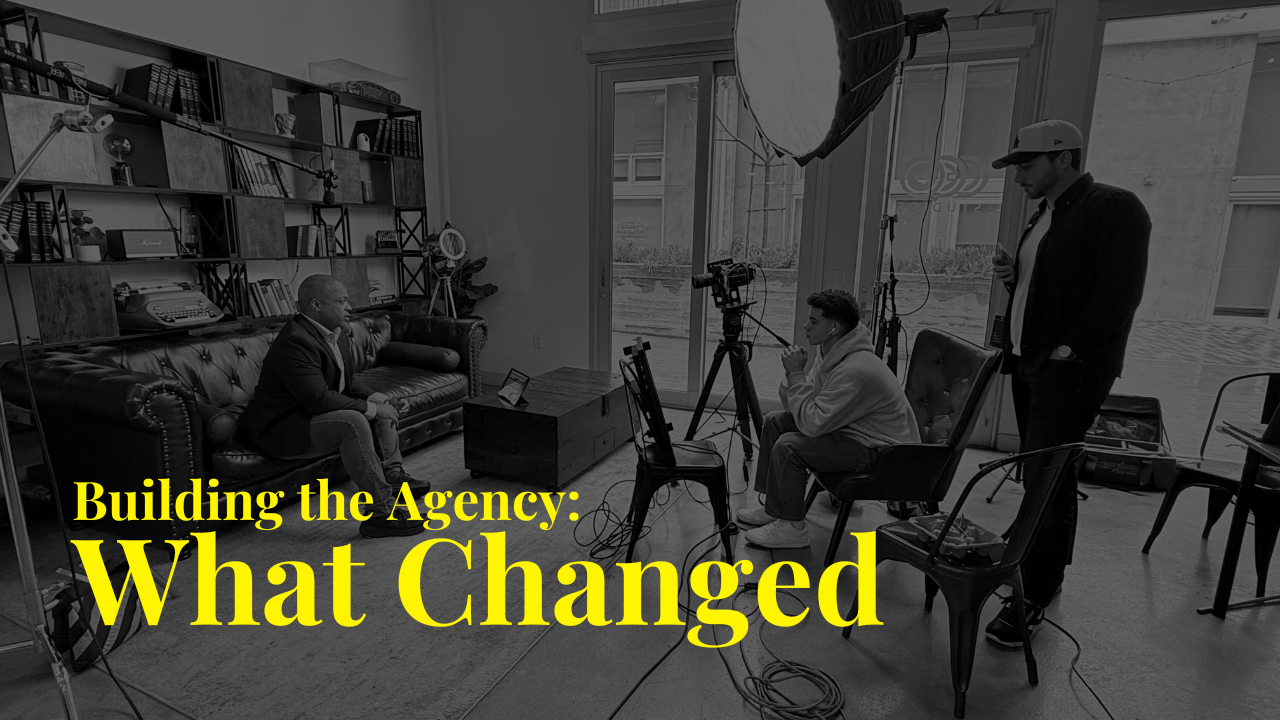Creating a social media plan for your company can be stressful.
But it doesn’t have to be.
See, most brands run into issues with social media when they are:
1. Reactionary — constantly looking for trends and playing catch up with their social content
2. Non-aligned with company goals — this causes frustration from the social team, who feel underappreciated, and builds resentment on the executive side because they see social as a cost center.
3. Don’t have a system — winging it on social leads to sporadic posting, relying on ‘creativity’ and time availability.
These problems are all solvable through building a social media plan. Below, I’ll walk you through the exact steps you can take to build a social media plan for 2024.
1. Understand where your customers are

The first step in any social media plan is figuring out what platforms your customers are on. You, as a marketer, are in the attention, attraction, and conversion game. So, it’s imperative you lean into platforms where you can facilitate all three.
So, how do you select the right platforms?
Start by building buyer personas based on your company’s past sale data. Talking to existing and previous customers about social media is the fastest way to collect relevant data. Alongside that, look at the general statistics on platforms and see which best aligns with your buying audience.
Be careful not to discount the context of each platform when making a decision. When people open LinkedIn, they’re in a business/career mindset, while when they open TikTok, they are looking for entertainment. Understanding the contextual use of each platform is something to consider before you begin creating content.
2. Understand how customers use your product in different situations
Go one step deeper than basic buyer personas. Start to think about how, when, and why your customers would use your product. Are they looking for convenience, status, love, etc.? Once you understand the potential situations a customer uses/wants your product for, you can create content to tap into that.
3. Align on Social Media Plan KPIs with your executive team

Sit with your executive team and clearly define what metrics assist the business in hitting its goals for the coming year. Because if you have these KPIs in place, it helps you (and the executives) from becoming distracted/reactionary.
How to do this?
Outline your goal and what it is contingent upon. For example, if you have agreed to increase impressions by X amount, then (i) understand what content you need and the frequency that you will post. Also, (ii) outline the necessary budget needed for boosting to maintain a baseline.
Then, do a labor-adjusted CPM (cost per 1000 impressions) calculation. That is, how much labor + ad budget did it take to get you 1000 impressions? The goal, from that point, is to get the CPMs down while having total impressions increase.
When you do this, you’re showing your executive team you’re budget-conscious and thinking about how marketing impacts the overall organization.
4. Use a system for creating content

To keep things like your labor-adjusted CPMs low, you need to implement a system. Creating and scheduling content can become a major drain on energy and resources for your company if it’s a free-for-all. A system can have you take one idea and repurpose it over and over in different ways.
So, how do you implement a system? Well, you can download the Social System 1.0 to help you create content consistently.
5. Moonshot Marketing

What is moonshot marketing? Well, it’s something that has a low chance of succeeding, but if it works, it has outsized ROI. This can be things such as getting on a leading podcast, speaking at a conference, having a video go viral, etc.
The key with moonshot marketing to write out what one huge win would look like and then spend a small percentage of the yearly time/budget on accomplishing it—I like aiming for five percent. You don’t want the moonshot to detract (too much) from your other efforts.
6. Audience and Community Building
The heart of a successful social media campaign is its ability to connect people. Building a dedicated audience and fostering a community around your brand is essential. But how?
- Engage Regularly: Don’t just post content; interact with your audience. Respond to comments, participate in relevant conversations, and even host Q&A sessions.
- Exclusive Content: Offer content exclusive to your social media followers, like behind-the-scenes looks or early product releases.
- Feature Fans: Finding ways to feature your followers on your feed or stories is a great way to let them know you’re listening to them. In particular, for platforms like TikTok, making response videos to comments is effective.
7. Influencer Marketing

Influencer marketing continues to be a powerful tool. It’s not just about finding someone with a large following but partnering with influencers who genuinely resonate with your brand values and audience. In fact, Influencer Marketing has changed quite a bit since brands started using it to market.
Some things to look for in your influencer programs:
- Authentic Partnerships: Look for influencers who already use or show interest in your products.
- Diversified Approach: Don’t rely on just one influencer or platform. Diversify to mitigate risks and reach different audience segments.
- Post on Brand Accounts: Work with creators who are willing to let you post their content natively on your feeds. This helps build your brand, not solely the influencers.
8. Crisis Management Planning

In the digital world, a crisis can escalate quickly. Having a crisis management plan is crucial. Don’t believe me; read about the time the pastor of a mega-church came after one of our clients.
- Preparation: Develop a crisis communication plan with predefined response templates for different scenarios.
- Monitoring: Keep a close eye on social media for any negative sentiments or potential issues. Use a social listening tool to help you with this; we use Brand24 (I have no affiliation to them).
- Rapid Response: In case of a crisis, respond quickly and appropriately. Transparency and empathy go a long way in damage control. If you need to involve legal, make sure they are aware of the need for speed in responding to public issues.
9. Data-Driven Decisions
Rely on data to refine and adjust your strategy—not solely your opinion.
- Analytics: Regularly review your social media analytics to understand what works and what doesn’t.
- Customer Feedback: Use social listening tools to gather feedback and adapt your strategy accordingly.
- A/B Testing: Experiment with different types of content, posting times, and platforms to see what yields the best results.
10. Continual Learning and Adaptation
Your social media plan should account for a landscape that is always evolving. Stay updated on the latest trends and platform updates.
- Education: Attend webinars, workshops, and conferences related to social media marketing.
- Experimentation: Don’t be afraid to try new features or platforms.
- Adaptation: Be ready to pivot your strategy if something isn’t working or if there are significant changes in the social media world.
I hope this helps with your planning for this year! If you have any specific social media questions, email me at Jordan@cavesocialdev.wpengine.com, and I’ll get back to you ASAP.
P.S. If you want to connect on social media, where I share tips throughout the week, follow me on X (Twitter) or Linkedin.





